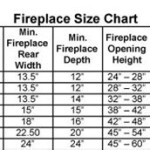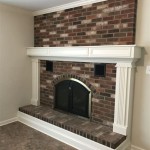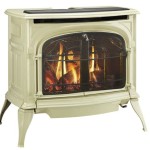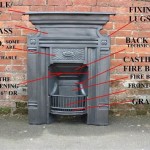Cost to Convert a Wood-Burning Fireplace to Gas Logs: A Comprehensive Guide
Converting a wood-burning fireplace to a gas log system is a popular home improvement project that offers convenience, improved efficiency, and reduced maintenance. However, understanding the costs involved is crucial for budgeting and making informed decisions. The total cost can vary significantly based on several factors, including the type of gas logs, the complexity of the installation, and local labor rates. This article provides a thorough overview of the various cost components associated with converting a wood-burning fireplace to gas logs.
The initial assessment of the existing fireplace is a critical step in determining the feasibility and cost of the conversion. A qualified technician will inspect the chimney flue for proper draft and any obstructions. They will also evaluate the firebox for any cracks or damage that might need repair. This inspection may reveal unexpected costs if repairs are required before the gas log installation can proceed. Additionally, the existing gas line infrastructure, or lack thereof, will be a significant factor influencing the overall expense.
Key Cost Factor 1: Type of Gas Logs and Venting Requirements
The choice of gas logs is a primary determinant of the project’s overall cost. Gas logs are broadly categorized into vented and vent-free models, each with distinct price points and installation requirements. Vented gas logs are designed for use in fireplaces with a functioning chimney flue that is always kept open during operation. They produce larger, more realistic flames and radiate more heat. However, they also require a significant amount of ventilation and are less energy-efficient than vent-free models. Vented gas log sets typically range in price from $300 to $1,500, depending on the size, material, and realism.
Vent-free (also known as ventless) gas logs, on the other hand, do not require a fully functional chimney. They burn cleaner and are more energy-efficient, as they release heat directly into the room rather than losing it up the chimney. These logs are equipped with an oxygen depletion sensor (ODS) that automatically shuts off the gas supply if oxygen levels in the room become too low. While vent-free logs are more energy-efficient and often less expensive to install, they may not produce as realistic of a flame as vented logs. Vent-free gas log sets typically range from $200 to $1,000. The choice between vented and vent-free logs depends on factors such as the presence and condition of the chimney, desired aesthetics, and energy efficiency considerations.
Furthermore, if the existing chimney is damaged or has not been properly maintained, relining or repair may be necessary. Chimney relining can involve installing a new stainless steel liner, which can add significantly to the overall cost, potentially ranging from $1,500 to $4,000 or more, depending on the height and complexity of the chimney. A thorough chimney inspection is crucial before proceeding with the gas log installation to avoid unexpected costs and ensure safe operation.
Key Cost Factor 2: Gas Line Installation and Permits
One of the most significant expenses in converting a wood-burning fireplace to gas logs is the installation of a gas line. If a gas line is already present near the fireplace, the cost will be considerably lower than if a new line needs to be run from the main gas supply. The cost of running a new gas line depends on several factors, including the distance from the gas meter, the accessibility of the route, and local building codes. Trenching, tunneling, and penetrating walls can add to the complexity and cost of the installation.
Typically, running a new gas line can range from $500 to $2,000 or more, depending on the length and complexity of the run. This cost includes materials such as piping, fittings, and valves, as well as labor costs for a qualified plumber or gas fitter. It is essential to hire a licensed professional to ensure the gas line is installed safely and complies with local regulations. Incorrectly installed gas lines can pose serious safety hazards, including gas leaks and explosions.
In addition to the physical installation, obtaining the necessary permits is a crucial step. Building permits are typically required for gas line installations and fireplace conversions. The cost of permits varies depending on the municipality but can range from $50 to $500. Obtaining the necessary permits ensures that the work is inspected and meets safety standards. Failing to obtain permits can result in fines and require the removal and re-installation of the gas line, adding significant unexpected costs.
Key Cost Factor 3: Professional Installation and Labor
While DIY installation might seem like a cost-saving option, it is generally recommended to hire a qualified professional for gas log installation. A certified gas fitter or plumber has the expertise and experience to ensure the installation is done safely and correctly. Improper installation can lead to gas leaks, carbon monoxide poisoning, and other safety hazards.
Labor costs for gas log installation can vary depending on the complexity of the project and the local labor market. Installation costs typically range from $300 to $1,000, but can be higher if significant modifications or repairs are necessary. When obtaining quotes from contractors, it is important to get a detailed breakdown of the costs, including labor, materials, and any additional fees. It is also advisable to check the contractor's licensing and insurance to ensure they are qualified to perform the work.
The installation process includes connecting the gas line to the log set, testing for leaks, and ensuring the system operates correctly. A professional will also be able to advise on the proper operation and maintenance of the gas logs to ensure their longevity and safety. Regular maintenance, such as cleaning the logs and inspecting the gas line, is essential to prevent problems and ensure safe operation.
Additional expenses to consider include the cost of any necessary fireplace accessories, such as decorative fronts, screens, or remote controls. These accessories can enhance the appearance and functionality of the gas log system but can add to the overall cost. Finally, consider the long-term operating costs, which will include the cost of natural gas or propane. The energy efficiency of the gas log system will impact these costs, with vent-free logs generally being more energy-efficient than vented logs. Converting a wood-burning fireplace to gas logs requires careful planning and budgeting to ensure a safe and cost-effective installation. By understanding the key cost factors and hiring qualified professionals, homeowners can enjoy the convenience and comfort of a gas fireplace for years to come.

What S The Cost To Convert A Wood Fireplace Gas Orange County Register

Want To Convert Gas Wood Fireplace Full Service Chimney

Wood Fireplaces Gas Conversion That Counts

Wood To Gas Fireplace Conversion In Wisconsin Free Quote Badgerland Waesha

Can A Wood Burning Fireplace Be Converted To Gas The Flame Company

Want To Convert Gas Wood Fireplace Full Service Chimney

How Much Does It Cost To Convert A Fireplace Gas 2024 Data Angi

Convert Fireplace To Gas Wood

Convert From Wood To Gas With A Insert The Kernel Burner

Can You Convert A Wood Fireplace To Gas The Burning Log
Related Posts








